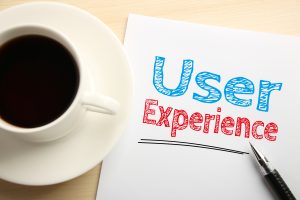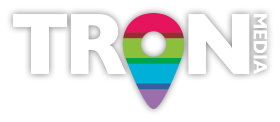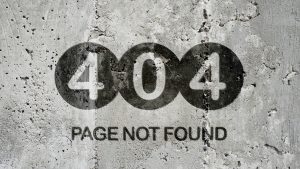
How To Improve SEO On Google
Marketers and SEOs have suffered significantly in 2023, to put it mildly. How can you be certain that the maximum impact is being made by your SEO work? Despite spam updates, E-E-A-T, and informative material, the SEO techniques discussed in this article that have withstood the test of time to increase SEO still work.
What is meant by E-E-A-T?
The E-E-A-T abbreviation used by Google, stands for Experience, Expertise, Authoritativeness, and Trustworthiness, to evaluate the authority and relevance of online pages and websites.
Reasons for updating your outdated content.

Refreshing outdated content indicates to search engines that your website consistently generates current stuff. It not only makes that one of the most important ranking elements for SERPs, but it also raises the authority rating of your website with both search engines and users. Historical optimisation is crucial since it makes sure your content marketing is effective and generates the best return on investment for your company.
Let’s examine the advantages that upgrading outdated content provides in more detail.
Improves ranking positions

Updating and republishing outdated content might improve its online visibility since Google favours freshness. Your content will draw more free organic traffic and introduce your goods or services to prospective new clients when it appears higher up in search engine results pages.
Increases traffic to the site

Your website can draw in new visitors if you update outdated information. More people are inclined to share updated content on social media and other platforms than outdated content, which can decrease website traffic.
Drives more conversions

Low conversion rates and a high bounce rate are clear indicators of poor-quality content. You can use historical optimisation to turn outdated material into a source of conversions, whether they are “soft” conversions like email subscriber signups or “hard” conversions like purchases.
Others desire to do something if a large number of individuals are doing it. By showcasing how other people are embracing your brand, you can boost signups and conversions. Applying the herd mentality theory will encourage more people to act.
Adds more value to the content

Your target audience’s problems should be addressed and added value-added via high-quality content. To improve your SEO results, it should address the needs of your audience and be accessible to a wider audience. You must consistently update the material on your website to succeed in search engine rankings.
Adding value to your material by updating the text, photos, or UX design encourages visitors to stay on your website longer and learn more about what you have to offer. This strengthens the authority of your brand and makes your message remembered.
It improves user experience

SEO not only attracts more visitors to your website, but it also improves the usability and accessibility of the website for those visitors. Steer clear of redundant meta descriptions if you want visitors to your website to keep clicking.
An unsatisfactory user experience may result from outdated content that is neither accurate nor pertinent. You can make sure that your visitors are receiving the most correct and up-to-date information by replacing outdated content, which will enhance their online experience.
It saves time and money

Every online retailer ought to undertake some DIY SEO. It increases traffic and saves money. However, some activities probably call for expert assistance. Coding modifications, structured data, and site speed are a few examples.
Optimising your historical content can be an affordable approach to make your website better. You can save time and money by updating and repurposing old material instead of starting from scratch and reaping the same benefits.
Generates more backlinks

High-quality backlinks can improve your website’s exposure and search engine rating, which will drive more people to it.
Fantastic content is easily shared by users, and when this happens, you get what’s called a “backlink,” which is just a link pointing back to your website from another website. They demonstrate to Google that your content complies with E- E-A-T (experience, expertise, authority, and trust) search quality requirements, backlinks are another crucial ranking element.
Which articles will you update and which will you keep the same?
Not every out-of-date item on your website needs an update.
Timeless content and content that is current are not interchangeable. Some things are so relevant that they are hard to recycle (business news, for example). However, updating evergreen material is a little easier. These articles are written with the intention of ranking highly on particular search terms and withstanding the test of time.
Thus, consider the following crucial queries for yourself:
-
Does my content still relate to my business or product?
Companies often begin concentrating on a different market or diverge from their initial product. As a result, older content can become out of date or irrelevant.
-
Did I write my content with the intention of increasing organic search traffic for a particular keyword?
Occasionally, articles are released in response to particular events (remember: pertinent content). Such articles will not draw more visitors after the event, therefore updating them is useless.
-
Has my content previously drawn in readers successfully?
Analyse historical data to determine whether the content actually increased search engine traffic. If not, you might want to think about whether updating the content is worth the effort, as it might require a lot of work to get it working properly.
-
Can my content compete with other listings on the first page based on its backlink profile?
Even getting to the 2nd page of Google search results with 83 backlinks will require a lot more work than getting your article to the ninth page without any backlinks.
-
Is there plagiarism on my website?
SEO plagiarism is the practice of copying content from other sources without giving proper credit or permission in order to raise one’s search engine ranking. Examples of copied work include text, images, videos, and data. This behaviour may negatively impact your search engine rankings and, in severe circumstances, lead to the blocking of your URL.
What is the recommended frequency of content optimisation?
There is no hard and fast rule when it comes to content optimisation. On the other hand, quarterly content audits can be a great place to start.
Depending on how much traffic the material provides to your website, look for patterns of falling traffic. Let’s say, for example, that a blog is receiving less traffic yet generating leads that meet marketing criteria. If so, in order to increase traffic and lead generation, it needs to be updated and optimised.
Now that we know the reasoning behind it, what kinds of content need to be updated, and how often, here are some techniques for updating older content to boost online marketing SEO?
Improve SEO by modifying your content in these ways.
Check the keywords for any gaps. You can retarget it for a more focused term with a high search volume and the possibility of more visits if you think you chose the wrong keyword.
Write new headlines for your articles.

These days, Google search is more concerned with users than it is with keywords, thus it’s crucial to have H1, H2, and H3 header tags.
Consider the way users search for a certain piece of content to better understand your headers and the ideal order for them.
- The first piece of advice: The H1 tag is the most significant since it functions as the page’s title. It is intended for one use only but can be used again if needed. If the focus keyword can be naturally included in the H1 title, this tag—which needs to be unique—may greatly enhance the SEO optimisation of the content.
- Make sure your target audience will understand your header tags the best you can. If your H2 is labelled “How to boost SEO marketing,” for example, your H3s should include several approaches to implementing that idea.
- Address every query listed under each header tag. If you’re still unaware, you may see highlighted snippets (the highest position a keyword can have in search results) of the content beneath header tags by using Google Search.
Update meta descriptions

When your prior content shows up in a Google search result, updating its meta description might help increase its click-through rate (CTR). Now put your creative SEO copywriting skills to use and create a variety of meta descriptions to see which one gets the most click-throughs.
Advice: If you are running sponsored search campaigns for the same term on Google AdWords, you may use the meta descriptions for your advertisements to determine which of them gets the highest click-through rate (CTR) over a period of time, like a week. Compared to waiting for results from organic traffic, this strategy is faster.
Update content headlines

80% of readers read the headline, but just 20% of those who see it read the text. For this reason, content headlines are essential for updating outdated material. What therefore constitutes a great headline for content?
- Excellent content headlines are consistently produced by listicles. Take “Top 10 ways to boost SEO in marketing,” for example.
- To make the content headline more relevant, update it to reflect the current year. For example, “Has the definition of SEO marketing changed in 2024?”
- You can also experiment with clickbait headlines, but only (and this is very important) if the content doesn’t deceive readers. Take “Hacks on How to Boost SEO by 33%” as an example.
Check for and fix any grammatical and spelling errors.

To begin with, misspelling and grammar errors appear amateurish. These problems will not only result in subpar responses but also have an impact on your SEO. A visitor’s bounce rate will be affected if they can’t locate what they’re looking for, which is bad for SEO over time.
What is “bounce rate”- The phrase “bounce rate” is used in web traffic measurement and Internet marketing. This is the proportion of users that access the website, exit (or “bounce”), and do not browse additional pages on the same website.
Make image optimisations for SEO advertising.

Even small changes to your photographs could have a big effect on your SEO.
As we mentioned earlier, search engines work by “crawling” websites. However, Google’s bots cannot crawl images. Image titles and alt captions are added by content marketers to their photos so that Google can “crawl” them.
Here are some guidelines for search engine-optimised images. Verify that your image’s filename is right. Instead of labelling the file IMG0001, that will ensure that users and Google bots understand the image’s purpose more clearly.
By utilising alt text to describe the image, you can give it more context. Reduce the alt text to a few words or less to improve SEO, and think about naturally incorporating the primary term into one of the photos.
Verify that your photos aren’t impeding the full optimisation of your website. Remember that website performance has a big impact on Google search results, so make sure your photos are optimised for fast loading times. Important factors include file size and browser caching, which can reduce the time it takes for an image to load.
What image format is best for SEO?

Because they offer higher compression levels, JPEGs are typically more SEO-friendly than PNGs, especially if you do not require translucent backgrounds.
Increase the accuracy of your content
Accuracy in digital marketing is important to understand because it is not a popularity contest. Even after receiving thousands of views, a piece of content does not guarantee that the person seeking for it will find it useful. Although we are unable to identify the precise components that Google considers to be the benchmark for content accuracy, I advise you to plan your strategy based on these metrics.
Credibility and Authority
At PubCon, Google also disclosed that they do not maintain track of E- E-A-T scores. Furthermore, Gary Illyes clarified that E-E-A-T and YMYL are ideas rather than benchmarks that they monitor. Having said that, building authority is still crucial, particularly when promoting accuracy in your writing. Links are one approach to find out if others regard you as an authority in a specific sector. When a large number of people link to you, it essentially establishes your authority for that specific piece of material. Authority and credibility go hand in hand, particularly when topic relevance is properly optimised.
Objectivity
In order to determine the topic’s authority and significance, they align their signals. Accuracy verification is not something that the system can do with ease. Nevertheless, you should still optimise your material to be as impartial as you can. This means that, to the greatest extent feasible, the material you release has to be objective and devoid of overt prejudice.
Correctness
When content is evaluated for correctness, it goes beyond simply checking for grammatical and lexical mistakes. It also refers to the lengths you would take to demonstrate that your writing is trustworthy enough to be acknowledged as a source of knowledge.
Consider it from an elementary school perspective: don’t bother believing that people who are actively looking for solutions will judge you favourably if these pupils wouldn’t utilise your content as a source for their assignments. Since it validates your content as something you can freely promote without worrying about user reaction and bad comments, correctness is an excellent metric for accuracy.
Remove or update broken links
Broken links can impact SEO in a number of ways.
Site quality: Google wants to recommend relevant, up-to-date websites. If there are too many broken links on your website, it might not be updated or maintained properly. Errors in the crawl: Google’s “bots,” also known as site crawlers, click links to search the internet.
Verify that none of the external or internal links, once you’ve decided to update a piece of content, go to a 404-error page.
You have three choices if you come across any such links.
1. Cut off the connection
2. Use an active link to replace the broken one.
3. Include an update that covers the same use case and includes a relevant link.
Add internal links, external links, and backlinks
For your article to rank, it needs links.
Google finds links to your pages and posts easier when they originate from other websites. Internal links not only assist Google in comprehending how your material is organised, but they also connect it. With their help, you may arrange your pages on your website in a hierarchy, giving higher-value pages and posts more link value than lower-value ones. Thus, by employing a successful internal linking strategy, you can raise your SEO!
Internal, external, and backlinks are the three sorts of links that are necessary for excellent SEO.
A particular type of connection on a web page called an internal link allows access to a picture or document hosted on the same domain or website. Hyperlinks are either “internal” or “external” depending on where they lead.
An internal link is any connection on your website that directs visitors to another page. Users and search engines alike use links to find content on your website. Users use links to navigate your website and find the material they want to see. Links are another way that search engines navigate your website. They won’t view a page if there are no links directing them to it.
There are several types of internal linkages. In addition to links on your menu, homepage, post feed, and other places, you may also incorporate links inside your text. We refer to those linkages as contextual ones.
An internal link from one website to another is called a backlink. Backlinks can also be referred to as “links,” “incoming links,” or “inbound links.” Backlinks are essential for Search Engine Optimisation (SEO) and user navigation on the internet. They are a little more difficult to come by.
Improve the quality of your content
Google aims to provide the best result for a given search term.
If you want your content to produce the best outcomes, you have to post the best material. It must also be significantly better than any earlier studies that have been done on the subject. Arefs calls this stuff 10X.
This suggests that you should assess if your information is exactly the same as everything else available online (1X), marginally superior (2X), or the greatest available on that topic (10X).
The better, the longer the content stays at the top of the search results.
So how can you take the already excellent stuff you have and make it even better?
- A well-designed website, easily readable information, and useful content are a few examples of quality.
- Originality: Does your updated content differentiate itself from other online content and offer value to the audience?
- Authority: Do you possess subject-matter expertise or are you an authority on the matter?
Conclusions Regarding SEO Boosting
Regular updates will guarantee that search engine bots will return to your content more often. They will see updated information as new. Additionally, employing this strategy will boost your SEO because fresher material is more searchable.




